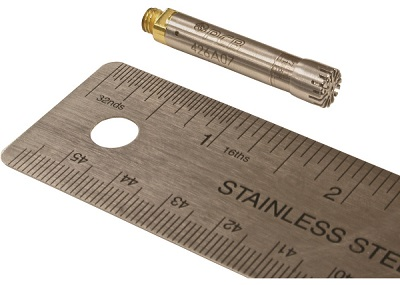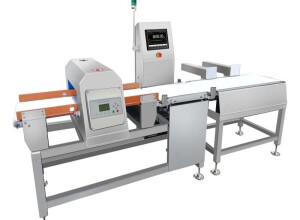PCB Piezotronics, Inc. (USA) - PCB Piezotronics Introduces New Design, Ideal for Testing in Confined Spaces.
PCB Piezotronics introduces a new short preamplifier for test engineers and acoustic consultants taking measurements in spaces where traditional microphone systems won't fit or where space constraints are a concern.
This new preamplifier, Model 426A07, converts a high impedance signal from a measurement microphone into a low impedance signal. The preamplifier can be paired with any PCB® ¼" free-field, random incidence (diffuse field) and pressure microphone cartridges to test high frequencies ranging from the human audible range (20 Hz to 20 kHz) up to ultrasonic frequencies (greater than 100 kHz) and high amplitude measurements past the human threshold of pain (up to 194 dB).
Common test applications include space-constrained cavities, impedance tubes, under automotive and jet engines, transmission loss and absorption, and embedded into the walls of cavities and tubes.
This website uses cookies. By browsing our website you accept the use of cookies. For more information read our Terms of Use.
PCB Piezotronics’ New Preamplifier for Acoustic Testing for Space Constrained Applications
- By PCB Piezotronics
- Posted on Sep 30, 2014

For more information about this article from PCB Piezotronics click here.
Other articles from PCB Piezotronics.
Interesting Links:
GameMarket.pt - Your Gaming Marketplace with Video Games, Consoles, PC Gaming, Retro Gaming, Accessories, etc. !
Are you interested on the Weighing Industry? Visit Weighing Review the First and Leading Global Resource for the Weighing Industry where you can find news, case studies, suppliers, marketplace, etc!
Are you interested to include your Link here, visible on all AutomationInside.com articles and marketplace product pages? Contact us
GameMarket.pt - Your Gaming Marketplace with Video Games, Consoles, PC Gaming, Retro Gaming, Accessories, etc. !
Are you interested on the Weighing Industry? Visit Weighing Review the First and Leading Global Resource for the Weighing Industry where you can find news, case studies, suppliers, marketplace, etc!
Are you interested to include your Link here, visible on all AutomationInside.com articles and marketplace product pages? Contact us
© PCB Piezotronics / Automation Inside
Previous article
A look into the future at the 2014 North American EtherCAT Plug Fest
Next article
EMX Industries’ New UV Sensor for Phosphorescent Pigments
Popular News
Automation Inside Newsletter
Popular Tags
Login




























Interested? Submit your enquiry using the form below:
Only available for registered users. Sign In to your account or register here.